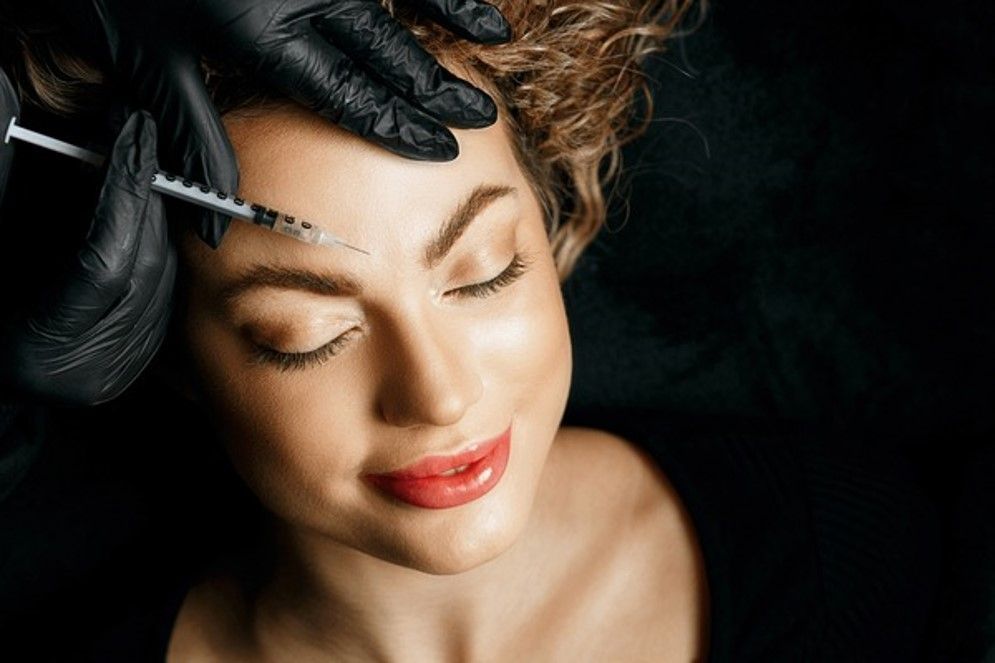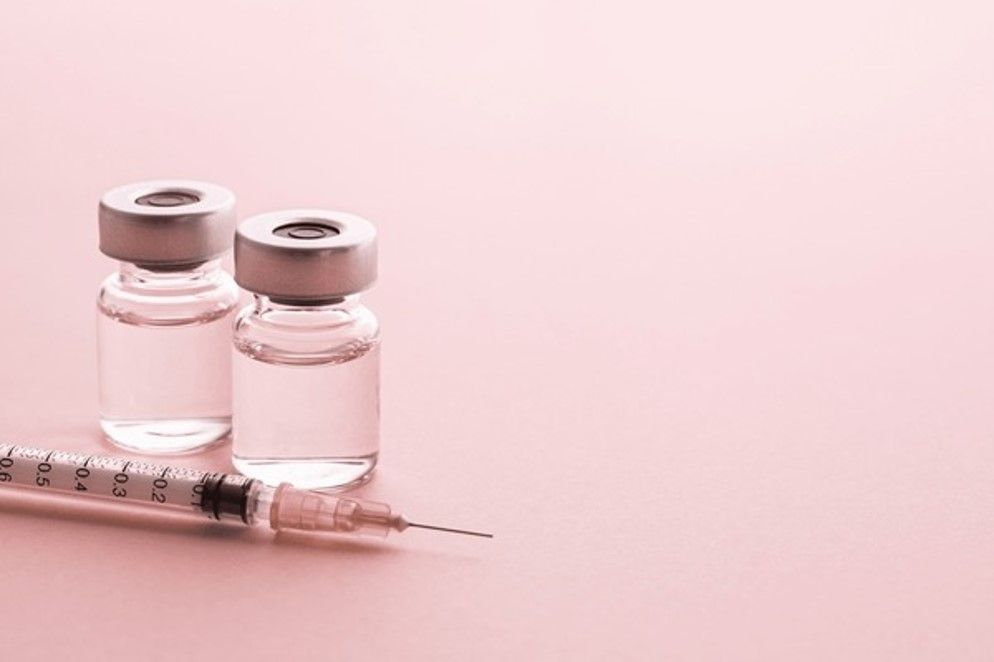What to Expect During Your First Injectable Treatment
Embarking on your first injectable treatment can provoke a mix of excitement and apprehension. In this blog, we’ll guide you through the essential aspects of the experience, helping you to feel informed and prepared. We’ll cover the types of injectable treatments available, from dermal fillers to Botox, and outline what happens during your consultation.
Understanding the pre-treatment preparations, the procedure itself, and the expected recovery process will be crucial. We’ll discuss potential side effects and how to manage them, as well as tips for selecting a qualified practitioner. By the end of this overview, you will feel more confident and ready to embrace the transformative journey ahead.
Understanding the Different Types of Injectables
Injectable treatments have become increasingly popular for enhancing facial aesthetics and restoring youthfulness. Here's a closer look at the different categories of injectables commonly used.
Dermal Fillers
Dermal fillers are designed to add volume to specific areas of the face, helping to smooth out wrinkles and enhance facial contours, and plump lips. Made from substances like hyaluronic acid, these fillers provide immediate results and can last from several months to over a year, depending on the product used and the individual's metabolism.
Botox
Botox, or botulinum toxin, is primarily used to reduce the appearance of dynamic wrinkles, which are caused by muscle movement. Commonly targeted areas include crow's feet, frown lines, and forehead lines. The effects of Botox typically last three to six months, after which muscle activity gradually returns.

Kybella
Kybella is a non-surgical injectable treatment specifically aimed at reducing submental fat, commonly known as a "double chin." The active ingredient, deoxycholic acid, destroys fat cells, leading to a more contoured jawline. Patients usually see results after a series of treatments.
Sculptra
Sculptra is a longer-lasting dermal filler that stimulates the body's natural collagen production. It is particularly effective for reducing volume loss in areas like the cheeks and temples. Results develop gradually over several weeks and can last more than two years.
Radiesse
Radiesse is unique in its ability to provide immediate volume and stimulate collagen production over time. Often used for deeper lines and folds, as well as enhancing contour, the results can last a year or more, making it a versatile option for many patients.
Understanding the differences between these injectables is crucial for making informed decisions regarding aesthetic treatments. Each option presents its benefits and considerations, setting the stage for a tailored approach to achieving your desired results.
Preparing for Your Initial Consultation
Preparing for your initial consultation is a vital step in ensuring a smooth and successful injectable treatment experience. By understanding what to expect and how to prepare, you can approach your appointment with confidence.
Research Your Options
Before your consultation, take the time to research the different types of injectable treatments available. Familiarize yourself with the various products, their intended effects, and the specific areas they address. Having a clear idea of your goals will enable you to have a more productive discussion with your practitioner.
Compile a Medical History
Be ready to discuss your medical history during the consultation. This includes any previous cosmetic treatments, allergies, medications, and underlying health conditions. Transparency about your health will help the practitioner determine the most suitable treatment plan for you.
List Your Questions and Concerns
Prepare a list of questions or concerns you may have regarding the treatments. This could include inquiries about the procedure, expected results, recovery time, and potential side effects. Engaging in an open dialogue will help you feel more informed and comfortable with the decision-making process.
Avoid Certain Medications and Substances
Guidelines often recommend avoiding certain medications, supplements, and alcohol before your consultation. Blood thinners like aspirin and non-steroidal anti-inflammatory drugs (NSAIDs) can increase the risk of bruising. Discussing this with your practitioner will ensure you're following best practices for safety.
Set Realistic Expectations
Understanding that results may vary from person to person is essential. Set realistic expectations regarding what the treatment can achieve for you. A good practitioner will help you envision attainable goals and guide you through the process of achieving them.
By taking these preparatory steps, you can make the most of your initial consultation and pave the way for a positive injectable treatment experience.
Setting Realistic Expectations for Your Treatment
Establishing realistic expectations is a crucial aspect of your injectable treatment journey. By understanding what to anticipate from the procedure and its outcomes, you can make informed decisions that align with your goals.
Understanding Treatment Limitations
While injectable treatments can yield impressive results, they are not miracle solutions. It’s important to acknowledge that these procedures can enhance your appearance but cannot create a perfectly symmetrical or ageless look. Discuss with your practitioner about the limitations of each treatment option.
Consultation and Goal Setting
During your consultation, articulate your desired outcomes clearly. A skilled practitioner will help you understand what is feasible given your specific anatomy and skin condition. Together, you can establish achievable goals that maintain your natural appearance while enhancing your features.
Acknowledging Recovery Time
Recovery times can vary based on the treatment type and individual responses. While some injectables offer immediate results, others may require time for the effects to fully develop. Understanding the expected timeline for recovery and results will help prevent disappointment.
Openness to Adjustments
Every individual's response to treatment can differ. Be open to the possibility that adjustments or follow-up sessions may be necessary to achieve your aesthetic goals. A good practitioner will monitor your progress and recommend refinements if needed.
Emphasizing Safety Over Perfection
Prioritize your safety and well-being by focusing on the overall treatment experience rather than striving for perfection. Trust the expertise of your practitioner, follow their advice, and understand that subtle improvements are often more desirable than drastic changes.
By setting realistic expectations, you can foster a positive relationship with your practitioner, leading to a more satisfying treatment experience and beautiful results.
The Importance of Choosing a Qualified Practitioner
Selecting a qualified practitioner is one of the most critical decisions you'll make during your injectable treatment journey. The right professional will not only enhance your aesthetic outcomes but also ensure your safety throughout the process.
Credentials and Experience
When seeking a practitioner, it’s essential to verify their credentials and experience in administering injectable treatments. Look for board-certified dermatologists or plastic surgeons who have a proven track record in aesthetics. Experienced practitioners will be well-versed in various techniques and understand how to achieve the best results tailored to your unique anatomy.
Patient Reviews and Testimonials
Researching patient reviews and testimonials can provide insight into a practitioner's skills and patient satisfaction levels. Look for platforms that feature unfiltered feedback, allowing you to gauge the practitioner's reputation and the quality of care offered. Positive experiences from past patients can help build your confidence in your choice.
Consultation Process
A qualified practitioner will prioritize your comfort during the consultation process. They should take the time to discuss your goals, thoroughly explain the potential treatments, and answer all your questions. A good practitioner fosters an environment of trust, ensuring you feel heard and valued throughout the decision-making process.
Safety Protocols
Emphasizing safety is paramount in cosmetic procedures. A qualified practitioner should adhere to strict safety protocols, including using sterile techniques and following guidelines to minimize risks. They should also be prepared to handle any complications that may arise, ensuring that you are in capable hands.
Continued Education and Training
The field of aesthetic medicine is ever-evolving, with new techniques and products regularly emerging. A dedicated practitioner invests in continued education and training to stay updated on the latest advancements. This commitment to learning ensures that you receive the most effective and safe treatments available.
Choosing a qualified practitioner is vital for achieving the best possible results while prioritizing your safety and care. Taking the time to research and find the right professional can lead to a rewarding and satisfying injectable treatment experience.
Pre-Treatment Preparations for Optimal Results
Preparing for your injectable treatment can significantly enhance your outcomes and overall experience. By following a few key guidelines, you can ensure that your body is fully ready and receptive to the treatment.
Hydration and Nutrition
Maintaining proper hydration and a balanced diet leading up to your treatment is essential. Drinking plenty of water helps to keep your skin plump and elastic, while a diet rich in vitamins and minerals can contribute to healthier skin. Consider foods high in antioxidants, such as fruits and vegetables, to promote skin health.
Avoiding Blood Thinners
To minimize the risk of bruising and swelling at injection sites, you should avoid certain medications and supplements that act as blood thinners. Common culprits include aspirin, ibuprofen, and fish oil. Consult your healthcare provider for advice on when to stop these medications before treatment.
Informing Your Practitioner
Transparency is key when preparing for your injectable treatment. Inform your practitioner about any medications you are taking, allergies, and previous cosmetic procedures. This information will help them tailor the treatment plan to your specific needs and ensure your safety.
Skincare Routine
Establishing a consistent skincare routine can prepare your skin for the procedure. Using gentle exfoliants and moisturizing products can help eliminate dead skin cells and keep your skin looking fresh. However, avoid aggressive treatments like chemical peels or laser procedures in the week leading up to your appointment, as they may irritate your skin.
Mental Preparedness
Being mentally prepared is just as important as physical preparations. Take the time to research the procedure, expectations, and potential outcomes. By entering the treatment with a positive mindset and realistic expectations, you can alleviate anxiety and contribute to a more enjoyable experience.
By following these pre-treatment preparations, you can set the stage for optimal results and enhance the overall success of your injectable treatment.
What Happens During the Procedure
Understanding the steps involved in your injectable treatment can help ease any anxiety you may have and set positive expectations for the experience. Here is an overview of what typically occurs during the procedure.
Arrival and Setup
Upon arrival at your practitioner's office, you will be greeted and guided to a treatment room. Your practitioner will review your treatment plan to ensure you are comfortable and understand the procedure. This is also an opportunity to ask any last-minute questions.
Numbing Agent Application
To enhance your comfort during the procedure, a topical numbing agent may be applied to the treatment area. This allows for a more pleasant experience by minimizing any discomfort from the injections. The numbing agent typically takes around 15-30 minutes to take effect, depending on the product used.

Marking the Injection Sites
Once you are numb, the practitioner will analyze your facial structure and mark the specific areas for injection. This step is crucial for achieving balanced and aesthetically pleasing results.
The Injection Process
The actual injection process involves carefully inserting the needle into the predetermined sites. Your practitioner will administer the injectable product in a series of small injections, often using a gentle technique to keep discomfort at a minimum. Depending on the treatment type, the process can take anywhere from 15 to 30 minutes.
Post-Procedure Care
After the injections, your practitioner will guide post-procedure care, which may include tips on managing swelling or bruising, as well as recommendations for makeup application. It’s important to follow these instructions closely to ensure the best possible outcome.
Follow-Up
Some practitioners may schedule a follow-up appointment to assess your results and discuss any concerns you might have. This is another opportunity to ensure that you are satisfied with the treatment and to address any ongoing needs.
By understanding what happens during the procedure, you can navigate your injectable treatment journey with confidence and ease.
Understanding the Sensations You May Experience
During your injectable treatment, it's natural to experience various sensations. Being informed about these can help you feel more at ease throughout the procedure.
Initial Discomfort
As the injections begin, you might feel a brief pinch or sting at the injection sites. Most practitioners utilize a gentle technique and may apply a numbing agent to minimize any discomfort. This sensation usually lasts only a moment and is often comparable to a slight bee sting.
Pressure and Tightness
Following the injections, you may experience a sensation of pressure or tightness in the treated areas. This feeling is generally transient and is a result of the product being introduced into your tissues. It should subside within a few hours post-treatment.
Swelling and Bruising
It’s common for mild swelling and bruising to occur around the injection sites. This reaction can vary from person to person but is generally temporary. Applying a cold compress as per your practitioner’s advice can help alleviate any swelling and discomfort, enhancing your overall comfort during recovery.
Tenderness
You may notice some tenderness in the treated areas. This sensation is usually mild and diminishes within a few days. It’s essential to follow your practitioner's post-procedure care instructions to ensure a smooth recovery.
Sensitivity to Touch
In the days following your treatment, it’s possible to experience increased sensitivity in the injection sites. This sensitivity often resolves itself as your body adjusts to the injected product and is part of the healing process.
By understanding these sensations, you can mentally prepare for your injectable treatment and reassure yourself that they are normal and temporary. Keep open communication with your practitioner should any concerns arise during your recovery.
The Role of Numbing Agents and Pain Management
When it comes to injectable treatments, pain management is crucial for ensuring a comfortable experience. Numbing agents play a key role in this process, allowing patients to undergo procedures with minimal discomfort.
Types of Numbing Agents
There are several types of numbing agents that practitioners may use, including topical creams, gels, or injectable anesthetics. Topical numbing agents, such as lidocaine or benzocaine, are applied directly to the skin and typically take effect within 15 to 30 minutes. Injectable anesthetics can also be administered for deeper numbing, particularly for more extensive treatment areas.
Benefits of Numbing Agents
The primary benefit of using numbing agents is to reduce pain and discomfort associated with the injection process. By minimizing sensations of pain, patients are more likely to feel relaxed and at ease throughout the procedure. Effective pain management can enhance overall satisfaction with the treatment experience and encourage individuals to seek further aesthetic care without apprehension.

Complementary Pain Management Techniques
In addition to numbing agents, practitioners may employ other pain management techniques to enhance comfort. These can include the use of vibration devices that distract from the needle insertion, applying ice packs before and after injections to reduce swelling, or utilizing gentle techniques during the injections.
By understanding the role and benefits of numbing agents, patients can approach their injectable treatments with greater confidence, knowing that effective pain management strategies are in place to ensure a comfortable experience.
Take the Next Step Towards Enhance Your Beauty
If you're ready to explore the benefits of injectable treatments and experience a transformative beauty journey, contact Bel Viso Medical Spa today! Our expert practitioners are here to answer your questions and provide personalized care tailored to your needs. Don’t wait any longer—reach out and schedule your consultation now !
Our Recent News & Articles





